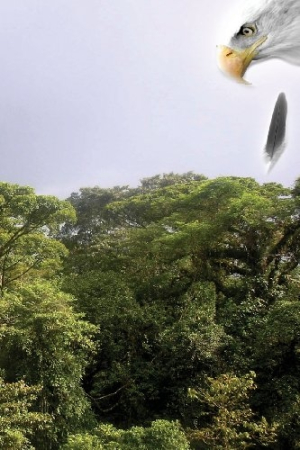Cuauhtemoc
Descending Eagle
In Cuauhtémoc: Descending Eagle, the story of a sixteenth-century Mayan child who grows to become a great leader by the time he is twelve, D.L. Davies’s vivid character descriptions are undermined by an unrealistic portrayal of an infallible child.
When the child is born, an eagle’s feather lands softly on the newborn, an omen of greatness for a boy destined to change the world. He is named Cuauhtémoc, “Descending Eagle.” The child accomplishes even more than could be expected: In turn, he becomes a healer, a Birdman, an inventor, and a great warrior—all before he hits his teen years.
Cuauhtémoc appears immune to the angst and uncertainty typical of the book’s targeted young adult age group. Displaying unrealistic cunning and intelligence far beyond his years, he invents a new weapon that changes the course of battle and leads troops as bravely as any seasoned general.
Cuauhtémoc, or “Inca,” as he later became known because of his royal ancestry, is the son of a hunter and grandson of a great healer who wants the boy to take up his art. Cuauhtémoc, however, is determined to become a Birdman, a young man who relies on wax wings to fly the emperor’s messages throughout the kingdom. The novel follows Cuauhtémoc through his training as a “nestling” and, later, a “fledgling.” Birdmen have short careers, usually ending when they turn eighteen and become too heavy to fly.
The young boy’s impeccable manners and wisdom beyond his years earn him the respect of adults, especially hunters because Cuauhtémoc invents clay arrowheads, which are deadly weapons easily made in mass quantity and much less costly than the obsidian ones previously used. The novel concludes with Cuauhtémoc flying to the emperor’s palace to embark on new adventures, which the author plans to continue in a second volume.
The author shows promise. His dialogue is effective and his descriptions of place are detailed and vivid, but the book has some weaknesses. Non sequiturs are found throughout: references to “good Karma,” eagles compared to “heat seeking missiles,” and unnecessarily reminders that communication is problematic because cell phones do not exist jolt the reader back to the present and detract from setting the mood of life in a traditional culture.
The story drags. Little action occurs before the last third of the book, when the author introduces the Wingmaster as a nemesis, although he is soon dispatched with little confrontation. The overemphasis on description at the expense of action makes for two-dimensional characters to whom readers will not easily relate. Only at the end of the story does Cuauhtémoc’s darker side emerge.
Hopefully, volume two will emphasize more action and the development of complex and interesting characters, especially Cuauhtémoc, who will be more believable if he is conflicted by normal teenage issues. If so, the author could deliver an adventure-fantasy with a wider audience appeal.
Reviewed by
Karl Helicher
Disclosure: This article is not an endorsement, but a review. The publisher of this book provided free copies of the book and paid a small fee to have their book reviewed by a professional reviewer. Foreword Reviews and Clarion Reviews make no guarantee that the publisher will receive a positive review. Foreword Magazine, Inc. is disclosing this in accordance with the Federal Trade Commission’s 16 CFR, Part 255.

